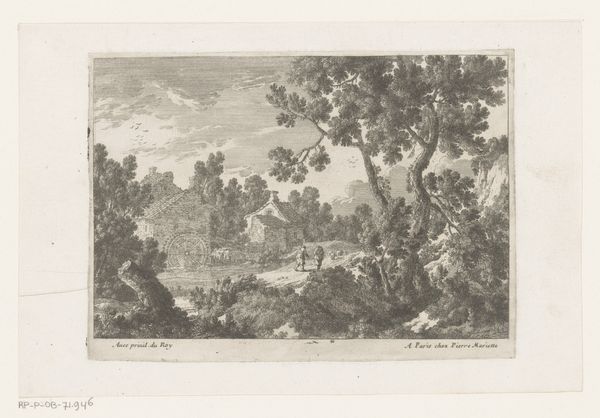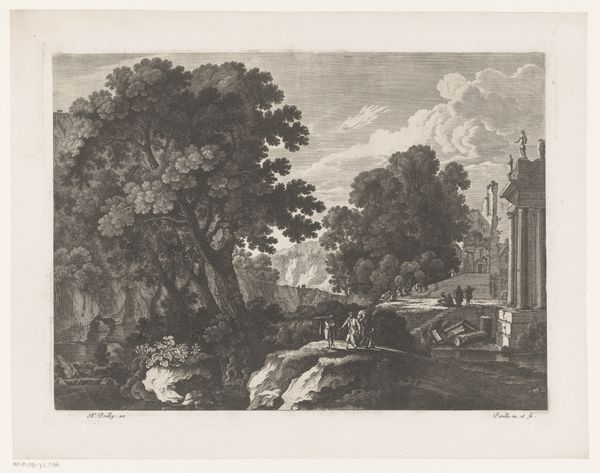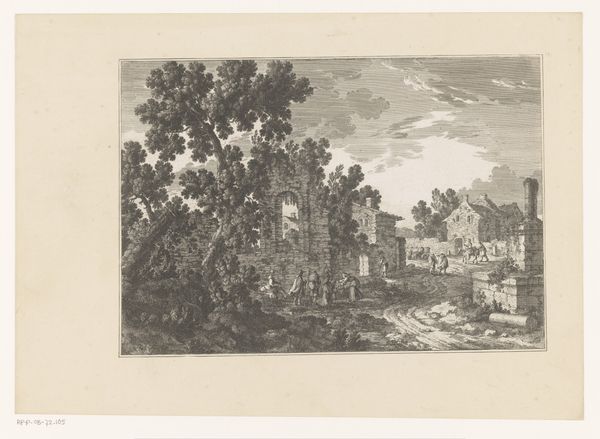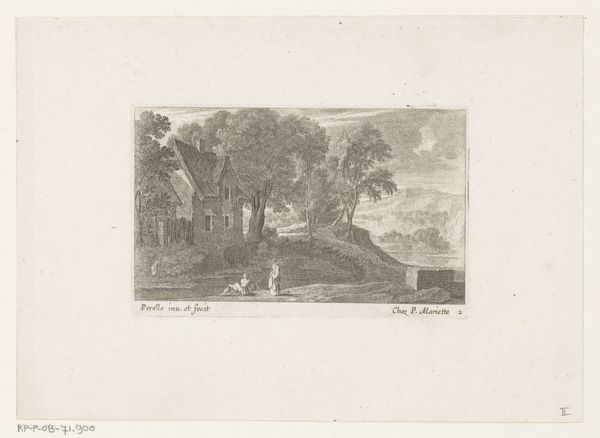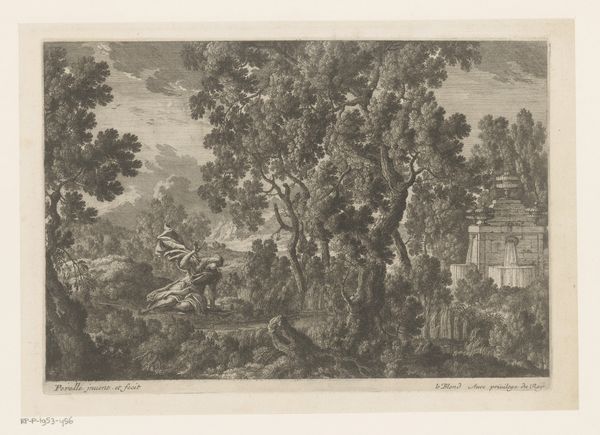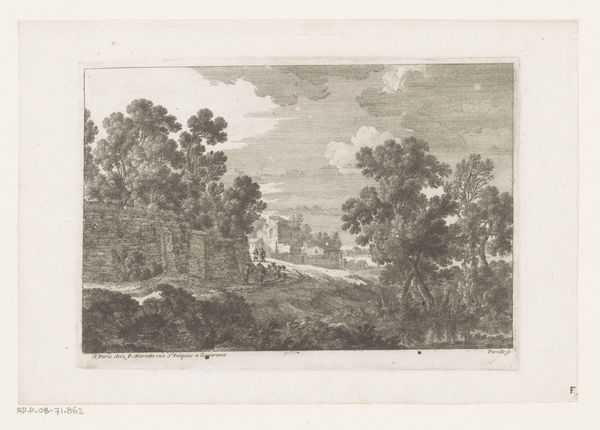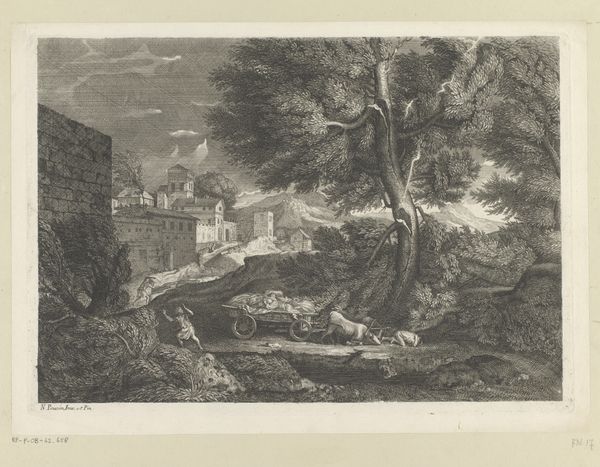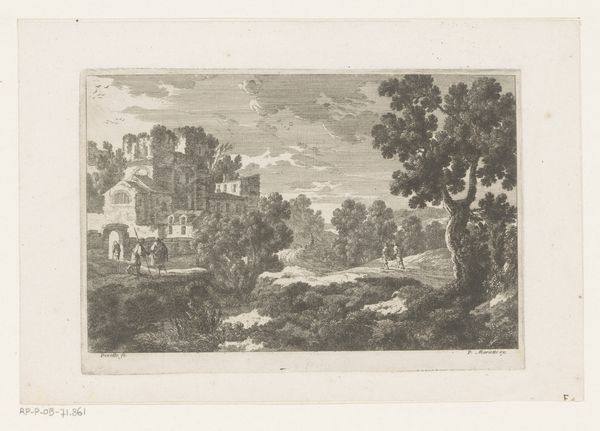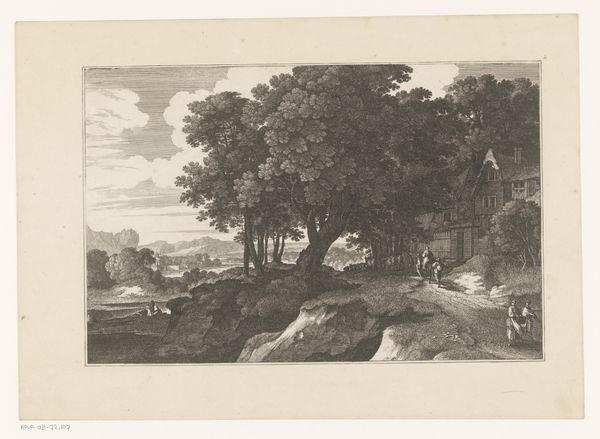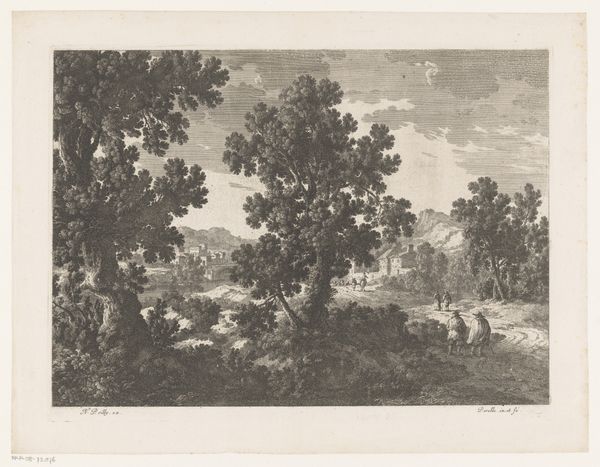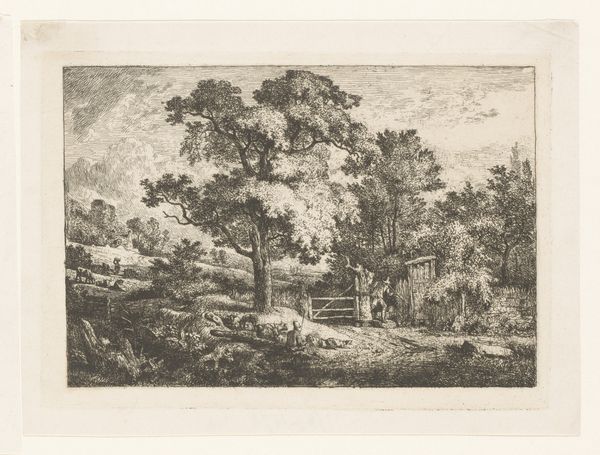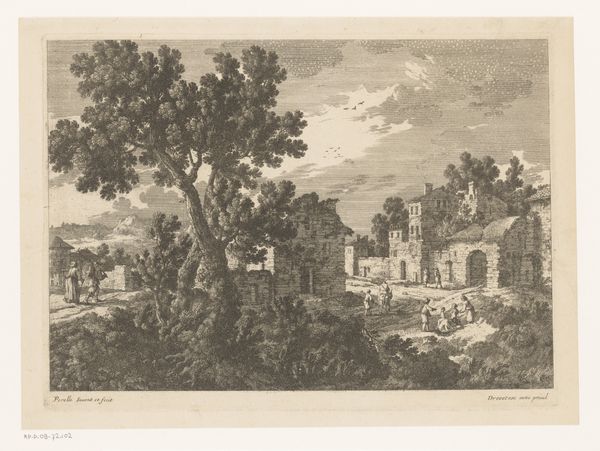
#
pencil drawn
#
photo of handprinted image
#
aged paper
#
light pencil work
#
natural tone
#
ink paper printed
#
pencil sketch
#
light coloured
#
pencil work
#
watercolor
Dimensions: height 145 mm, width 221 mm
Copyright: Rijks Museum: Open Domain
Editor: This is "Landscape with a Figure on a Pack Animal," made sometime between 1613 and 1695 by Nicolas Perelle. It's currently housed at the Rijksmuseum. I’m immediately struck by the overall light and airy quality. What do you see in this piece that goes beyond the surface? Curator: The delicate lines of this drawing immediately invite us to consider its social context. Landscape art during this period was often commissioned by the wealthy to not only represent property, but to evoke feelings of ownership and dominance. This work, seemingly idyllic, might inadvertently reinforce hierarchical structures of the time, representing an era of landowners versus land workers. Editor: So you're saying the peaceful scene might have deeper, maybe even darker, implications? How does this link to power structures? Curator: Exactly. The lone figure on the animal, elevated slightly, traveling through this landscape... it’s hard not to consider class and social mobility, or lack thereof, through a critical lens. Is the artist subtly commenting on societal divisions? Or perpetuating them? The setting feels idealized, which prompts the question: idealized for whom? The natural tones almost lull us into accepting that social construct is equally unchangeable. Editor: That makes me think about who got to *see* and own art like this. It probably wasn't the people working the land. Curator: Precisely. Who are the intended viewers, and what values are being affirmed? These seemingly simple landscapes often carry complex ideologies about land ownership, labor, and social order. Understanding those nuances can reshape our appreciation—and critique—of works like these. Editor: This has definitely made me rethink how I look at landscapes from this period. I was focused on the aesthetics, but you've opened up a whole new avenue of interpretation! Curator: And that’s the power of engaging with art history critically. It challenges us to move beyond the visual and delve into the cultural, political, and social dynamics embedded within.
Comments
No comments
Be the first to comment and join the conversation on the ultimate creative platform.
